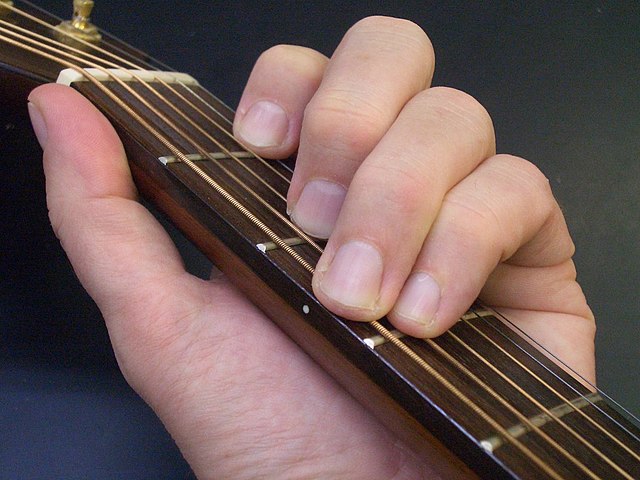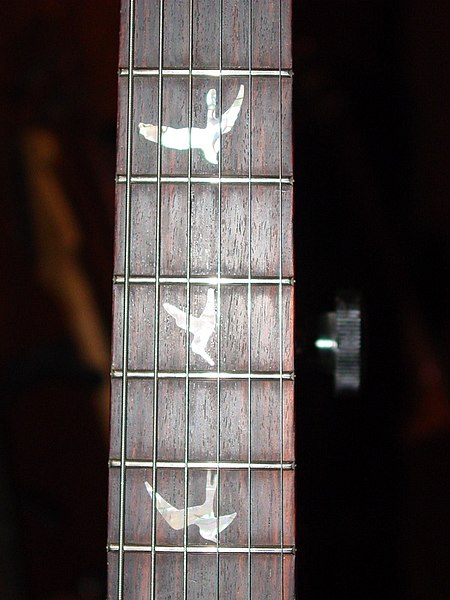Inlay covers a range of techniques in sculpture and the decorative arts for inserting pieces of contrasting, often colored materials into depressions in a base object to form ornament or pictures that normally are flush with the matrix. A great range of materials have been used both for the base or matrix and for the inlays inserted into it. Inlay is commonly used in the production of decorative furniture, where pieces of colored wood, precious metals or even diamonds are inserted into the surface of the carcass using various matrices including clear coats and varnishes. Lutherie inlays are frequently used as decoration and marking on musical instruments, particularly the smaller strings.
Example of Boulle work inlay using tortoiseshell in mottled red, brass and pewter
Boulle work showing the use of pewter (center) and the 'depth' given by tortoiseshell in the background. Brass inlay is on the right and left.
Mother of pearl inlay into walnut burl on a customised Fender Stratocaster.
Inlay (ivory, red sandalwood, copper) on wooden casket
Inlay on guitars or similar fretted instruments are decorative materials set into the wooden surface of the instrument using standard inlay techniques. Although inlay can be done on any part of a guitar, it is most commonly found on the fretboard, headstock—typically the manufacturer's logo—and around the sound hole of acoustic guitars. Only the positional markers on the fretboard or side of the neck and the rosette around the sound hole serve any function other than decoration. Nacre, plastic and wood are the materials most often used as inlay.
Body and sound hole inlays
Side of the fretboard inlays, with a small dot that marks 3rd fret
Dots (used by Fender, Gibson and on most guitars)
Birds (PRS)








